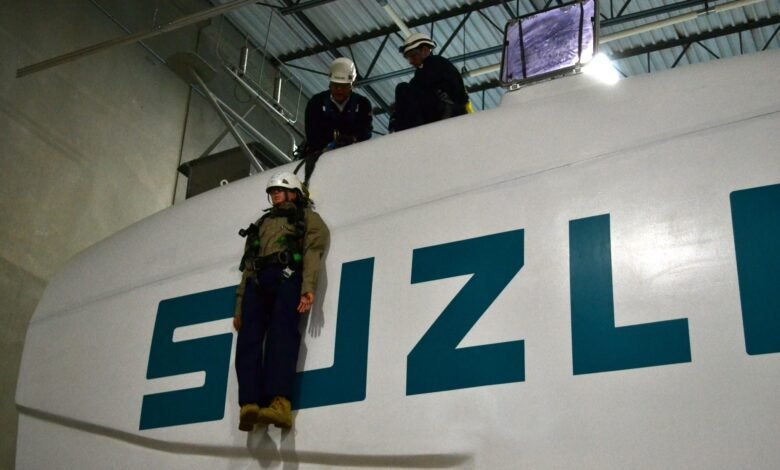Suzlon Energy Share Price Explained Through Turnaround Phases

Suzlon Energy, one of India’s oldest glory managers of renewable energy, has witnessed rounds of this financial and operational restructuring in the past two decades. Such organizational changes have had direct bearings on the share prices of Suzlon Energy; the changes could be watched in the business evolution with debt and sector dynamics of the company. Gaining such context would give retail investors, who are now entering the market with easy demat account opening, a view of the history and key turnaround phases of Suzlon against which to judge share price movements.
Phase 1: Expansion and Early Growth (2000-2008)
In the early 2000s, Suzlon scaled domestic and international boundaries through rapid wind energy projects, capital expansion, enhanced manufacturing plants, and technology portfolio acquisition owing to European companies.
During this phase, the high investor expectations associated with India’s renewable energy aspirations and Suzlon’s role in the wind segment found reflections in both the momentum and price of the Suzlon Energy shares. Unfortunately, the aggressive growth that prevailed during this period began to witness higher levels of debt, increasing the company’s sensitivity to changing scenarios in the global arena.
Phase 2: Financial Stress and Asset Sales (2009-2015)
The financial stress began to set in post-2008 as the global financial situation demanded operational delay and growing debt. The company had cash flow problems, projects were being delayed, and interest obligations were extremely high—the set of circumstances that was the cause of a sharp decline in share price, with frequent losses and news of debt restructuring sending the investors scurrying.
The sale of its international subsidiaries was one way to monetize assets, amending the misfortunes of the company in its earlier turnaround attempts. These asset monetization steps were part of its initial attempts at a turnaround; however, they solved only some of its problems. Retail interest had substantially diminished during this period.
Phase 3: Debt Restructuring and Strategic Refocus (2016-2019)
This phase was marked by deep debt restructuring initiated by Suzlon. To reduce interest costs and extend loan tenure, the company would focus most on the domestic wind market. On the operational side, it diluted business verticals, aligning them with India’s onshore wind policy.
The financial status of the company, although clouded with challenges, ever so often saw recuperation in the Suzlon Energy share price, which was basically propelled by the clarity of the business direction and its standing with the lenders. Short-term trading interest would periodically ignite those transient recoveries, but soon, the ground would shift from beneath its feet amid constant high volatility.
Phase 4: Pandemic Disruptions and Operational Challenges (2020-2021)
In common with many a firm in the infrastructure and energy sector, Suzlon was disrupted during the COVID-19 pandemic. Increased project delays, supply chain constraints, and working capital pressure were imposed as stressors on operations.
Nevertheless, this offered a revival for retail investor interest, especially with the plug-and-play nature of online demat account openings. The stock, in and out of favor with traders and short-term investors, stood a good chance of catching some momentum in price movement during the general recovery of the markets.
The fundamental turnaround, however, remained unfinished, and the share price kept reacting to the quarterly earnings and news from the sector.
Phase 5: Renewed Turnaround Efforts and Sector Tailwinds (2022-Present)
Recently, Suzlon has turned its focus toward reducing debt via rights issues, controlling operational costs, and better executing wind energy projects. There have been considerable developments too, as renewable energy has become a strategic goal in national planning, attracting more institutional investor interest.
With the government setting targets for wind capacity and transmission infrastructure, execution progressed. The Suzlon Energy share price began to mirror all these activities, frequently following the trend of investor sentiment regarding the firm’s ability to uphold operations and repay liabilities.
New investors in the market (a lot through quick demat account opening) have added to volumes in the Suzlon counter, particularly during times of sector announcements or earnings results.
Conclusion
The Suzlon Energy share price has, over the years, reflected a prolonged series of turnaround attempts that were closely tied to debt management, project executions, and strategic restructuring. Aside from this constant feature of volatility, expectant changes were observed in investor sentiment during each of these periods.